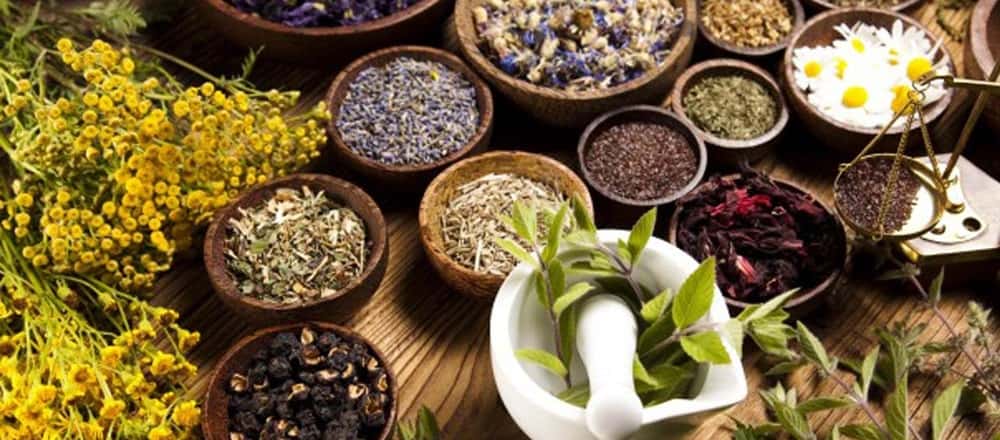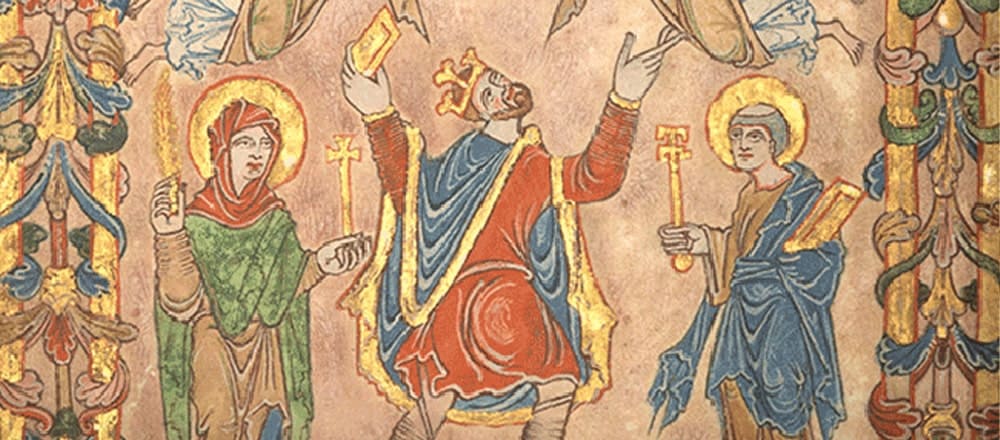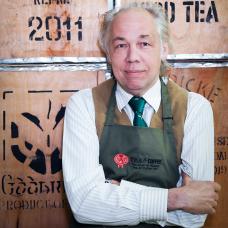The Nine Sacred Herbs

The Kent and Sussex Tea and Coffee Company finds itself nestled in the beautiful southeastern corner of the UK. It was here, many centuries ago, that the Anglo-Saxons first arrived.
They called the region before them “Enlaland,” which means “land of the Angles” – a name that has, of course, since stuck. These Germanic tribes influenced our culture in many other ways, too, including the Nine Sacred Herbs.
The following article will explore the history of this tradition and why it remains important. Each of the nine plants will get a mention, detailing their botany and function in Anglo-Saxon society.
Some of them we stock here as delicious, health beneficial Herbal Teas. So, once you know the facts, you can buy them and try them to see if they offer the qualities considered sacred to our ancestors.
Table of contents
- Who were the Anglo Saxons?
- What are the Nine Sacred Herbs?
- Camomile was one of the Nine Sacred Herbs
- Nettle – a Herb used by the Romans and the Saxons
- Fennel is a Herbal Remedy Today
- Crab Apple is an Ancestor to the Cultivated Apple
- Mugwort is a Weed with Potential
- One of the Nine Sacred Herbs was Plantain
- The Saxons Used Watercress for its Healing Properties
- Chervil – a Folk Medicine of Centuries Past
- Cockspur Grass or Betony?
- Three of the Nine Sacred Herbs you can Buy Online Here

Who were the Anglo Saxons?
When the Romans left Britain in 410 CE, it wasn’t long before others took their place. A mix of tribes from Denmark, Germany and the Netherlands soon arrived on our shores.
These were the Angles, the Saxons and the Jutes (the latter became the people of Kent). They fought the native Britons (including, according to legend, King Arthur) for land and, for the most, won the struggle.
The Anglo-Saxons (a combination of the Angles and the Saxons) became the dominant political force in England for many centuries. They changed British society and culture forever, with most non-Celtic English people tracing their origins back to this time.
Their era ended in 1066 when the last Saxon King, Harold II, fell during the Battle of Hastings.

What are the Nine Sacred Herbs?
The Anglo-Saxons, like the Romans and Celts before them, relied heavily on herbs for their healing properties. In the tenth-century CE, a medical compilation known as Lacnunga (translated from Old English to mean “Remedies”) was created.
It contains almost 200 treatments, all of which involve medicinal plants and other materials, as well as prayers and incantations.
Many of the plants mentioned in the text play a significant role in paganism. There is also a reference to the Germanic god, Woden. Among the remedies is that of the Nine Sacred Herbs, which, according to Saxon beliefs, protected against disease.
The theory of the time was that poisons were spread in the wind and, therefore, consuming these herbs stopped “flying venom” from infecting people. An extract reads:
A worm came creeping, he tore asunder a man. Then took Woden nine magic twigs and he smote the serpent that he flew into nine bits.
Now these nine herbs have power, against the nine magic outcasts, against nine venoms, against nine flying things, and against the loathed things that over land rove.
Against the red venom, against the runlan venom, against the white venom, against the blue venom, against the yellow venom, against the green venom, against the dusky venom, against the brown venom, against the purple venom.
The Nine Sacred Herbs were Camomile (Matricaria chamomilla), Nettle (Urtica dioica), Fennel (Foeniculum vulgare), Crab Apple (Malus sylvestris), Mugwort (Artemisia vulgaris), Plantain (Plantago major).
Watercress (Nasturtium officinale), Chervil (Anthriscus cerefolium) and, possibly, Cockspur Grass (Echinochloa crus-galli). Some believe that the latter was instead Betony (Stachys officinalis).

Camomile was one of the Nine Sacred Herbs
Camomile is a flower belonging to the Asteraceae (daisy) family. The variety the Saxons used was what we today know as German Camomile (Chamaemelum nobile), although another popular type is Roman Camomile (Chamaemelum nobile).
It is a hardy, self-seeding annual herb with a hollow, bright-gold cone, which, in turn, boasts white rays. When brewed to make Camomile Tea, it has a distinctly floral flavour.
It will likely come as no surprise that, according to modern science, this flower doesn’t offer the qualities touted in Anglo-Saxon medical literature. Nor, for that matter, do any of the other Nine Sacred Herbs.
However, it does have health potential – particularly when Camomile Tea can improve sleep, reducing anxiety and, somewhat related to the above, boosting immunity.

Nettle – a Herb used by the Romans and the Saxons
The Nettle (Urtica dioica) is a plant we love to hate. Its name comes from the Anglo-Saxon word “Noedl,” which means “needle” – referring to its sting.
The term “Urtica dioica,” meanwhile, is twofold: “Urtica” is from the Latin words for “sting” or sometimes “burn.” “Dioica” means “two houses,” alluding to how male and female flowers grow on separate nettle plants.
The Romans once used it for the practice of urtication. This involved lashing the body with nettles to treat fatigue and paralysis, which became common among the legions during long marches across Britain.
Today, we – the descendants of the Saxons – recognise its ability to combat hayfever, lower blood pressure and even treat hair loss due to Nettle Tea Benefits. It tastes great, too, with herbaceous notes and minty undertones.

Fennel is a Herbal Remedy Today
Fennel (Foeniculum vulgare) is a hardy, aromatic, perennial plant belonging to the Carrot (Apiaceae) family. It grows yellow flowers and feathery leaves, which, although native to the Mediterranean, have since spread across the world.
When brewed, most recognise it for its aromatic character, bold anise notes and herbaceous hints. Preliminary evidence also indicates that Fennel Tea serves as a hormone balancer.
Yet its initial fame stems not from the Anglo-Saxons’ Nine Sacred Herbs, but the history of the ancient Greeks. The plant itself grew on the site of the infamous Battle of Marathon in 490 BCE.
Such was its abundance there, in fact, that the decisive Greek victory over the invading Persian army took its name from this herb. The word “Marathon” (μαραθώνας), translated from Greek, means “a place of Fennel.”

Crab Apple is an Ancestor to the Cultivated Apple
While many of us owe our origins to the Anglo-Saxons, the cultivated apple came about because of the crab apple (Malus sylvestris). The tree from where it derives can grow to 10 metres high and lives for up to 100 years.
They consist of an irregular, round-shaped canopy and greyish-brown, flecked bark, which can appear quite gnarled and twisted. This “crabbed” appearance might be why it is known as such.
Crab apples have a close association with love and marriage. Some believed that if you threw the pips into a fire while speaking your lover’s name, the love was true if the pips exploded.
Nowadays, you’re more likely to see the trees growing as pollination partners for cultivated apples. The fruit can be roasted and served with food or used for setting jams. They are also an excellent source of Vitamin A.

Mugwort is a Weed with Potential
Mugwort (Artemisia vulgaris) is a flowering plant in the Asteraceae (daisy) family. It can grow up to 1.4 metres tall, forming dense stands that often smother other vegetation.
Some consider it similar in appearance to that of the garden chrysanthemum, which is why it has the nickname, “chrysanthemum weed.” Yet, unlike some weeds, it has great potential.
This seemingly insignificant herb has, throughout human history, served as a yellow dye, an insect repellant and an ingredient in food dishes. What’s more, it is one of the Nine Sacred Herbs.
Health benefits attributed to it today include reduced gas, diarrhoea and constipation. It might ease mild headaches, too, and even combat chills and fevers.

One of the Nine Sacred Herbs was Plantain
Often dismissed as a garden pest, the Plantain (Plantago major) is another example of a herb with much to offer. It is a herbaceous perennial plant with a rosette of leaves approximately 15-30 centimetres in diameter.
Each leaf is oval-shaped and broad with an acute apex, a smooth margin and a distinct petiole almost as long as the leaf itself. When brewed, it reportedly comes with medicinal qualities.
Although it can’t, perhaps unsurprisingly, fight flying venom, it can reduce inflammation and support digestive health. Preliminary evidence goes as far as to suggest that it might treat coughs and bronchitis.
Its traditional use, on the other hand, and in addition to its purpose as one of the Nine Sacred Herbs, was to relieve sores, blisters, swelling and insect stings.

The Saxons Used Watercress for its Healing Properties
Watercress (Nasturtium officinale) is an ingredient we use in salads, smoothies and sandwiches. Many hundreds of years ago, however, it was yet another example of one of the Nine Sacred Herbs.
This hardy perennial grows in abundance near springs and open running watercourses – hence its name. Most notably, it has smooth, shining, brownish-green, pinnatifid leaves and ovate, heart-shaped leaflets.
This herb is low in calories and high in nutrients. It contains significant levels of Vitamin K, which prevents blood clotting and maintains healthy bones. Additionally, there are small amounts of Vitamin E, thiamine, riboflavin, Vitamin B6, folate, pantothenic acid, magnesium, phosphorus, potassium, sodium and copper.
These chemical compounds support your wellbeing in a plethora of ways.

Chervil – a Folk Medicine of Centuries Past
This annual herb, known botanically as Anthriscus cerefolium, is related to parsley. It is particularly popular in French cuisine. However, here in “Enlaland,” Chervil has long played a role in folk medicine.
The plant’s lacy, decompound, aromatic leaves are the key component, which the Anglo-Saxons believed held remarkable healing powers. Yet there is little evidence to support such a claim today.
Still, there is a possibility – if not quite proven outright – that it contains potent antioxidants capable of combating free radicals in the body. Free radicals, in turn, are unpaired (and unsafe) electrons introduced through natural, though harmful, oxidative stress.
When consumed in large quantities, then, it might reduce the risk of developing numerous chronic conditions – although research is scarce.

Cockspur Grass or Betony?
The ninth of the Nine Sacred Herbs is, depending on which theory you believe, either Cockspur Grass (Echinochloa crus-galli) or Betony (Stachys officinalis).
The former is a plant that can grow up to a metre high, consisting of long, flat leaves which are sometimes purplish at the base. The latter is a perennial grassland herb growing up to 60 centimetres tall, its leaves stalked on upright stems with toothed margins.
What’s with the ambiguity? The original text/poem/charm in Lacnunga refers to a herb called “Atterlothe.” The English scholar, R.K. Gordon (1887–1973), believed it to be cockspur grass, while later versions of the medical compilation refer to it as Betony.
If it was, indeed, Betony, then it’s worth noting that it reportedly relieves anxiety. However, the mystery remains.

Three of the Nine Sacred Herbs you can Buy Online Here
We now, for the most, know the truth behind the Nine Sacred Herbs. The Anglo-Saxons believed them to be integral to their belief systems, using them in daily life to “cure” numerous ailments.
While some of these healing properties have since been disproven, modern science has brought others to light. This is especially the case for Camomile, Nettle Tea and Fennel Tea – all of which we stock here.
If you’d like to learn more before buying, we have written blogs on all three: Camomile Tea Benefits, Nettle Tea Benefits and Fennel Tea Benefits.
Alternatively, you can get brewing as soon as possible by browsing our vast selection of standalone infusions and Herbal Teas. The Kent and Sussex Tea and Coffee Company take pride in packing them all fresh to order.

 Loose Leaf Tea
Loose Leaf Tea Pyramids
Pyramids Tea Bags
Tea Bags Africa
Africa Assam
Assam Ceylon
Ceylon Chinese
Chinese Darjeeling
Darjeeling European
European Indian
Indian Japan
Japan Nepal
Nepal South East Asia
South East Asia Ayurveda Tea
Ayurveda Tea Black Tea
Black Tea Chai Tea
Chai Tea Flowering Tea
Flowering Tea Fruit Tisanes
Fruit Tisanes Green Tea
Green Tea Herbal Tea
Herbal Tea Matcha Tea
Matcha Tea Oolong Tea
Oolong Tea Organic Tea
Organic Tea Pu erh Tea
Pu erh Tea Rooibos Tea
Rooibos Tea White Tea
White Tea Asian Coffee
Asian Coffee Caribbean Coffee
Caribbean Coffee Central American Coffee
Central American Coffee South American Coffee
South American Coffee Coffee Blends
Coffee Blends Decaffeinated Coffee
Decaffeinated Coffee Espresso Coffee
Espresso Coffee Ethically Sourced Coffee
Ethically Sourced Coffee Flavoured Coffee
Flavoured Coffee Organic Coffee
Organic Coffee Single Origin Coffee
Single Origin Coffee Chocolate 1
Chocolate 1 Chocolate 2
Chocolate 2 Chocolate 3
Chocolate 3 Chocolate 4
Chocolate 4 Chocolate 5
Chocolate 5 Chocolate 6
Chocolate 6 Chocolate 7
Chocolate 7 Chocolate 8
Chocolate 8 Chocolate 9
Chocolate 9 Loose Tea Filters
Loose Tea Filters Tea Accessories
Tea Accessories Tea Bricks
Tea Bricks Tea Caddies
Tea Caddies Tea Caddy Spoons
Tea Caddy Spoons Tea Gift Ideas
Tea Gift Ideas Tea Infusers
Tea Infusers Tea Strainers
Tea Strainers